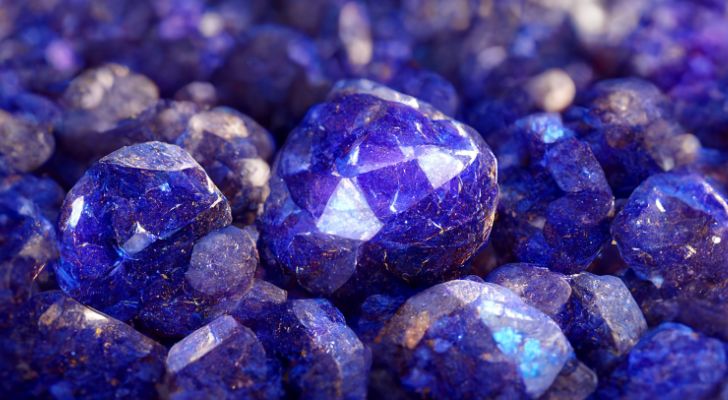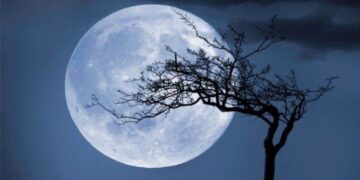Turquoise, zircon, and tanzanite are the beautiful blue birthstones for the last month of the year, December.
However, there’s a cool twist you might not know – these stones come in many other shades. This means you can still celebrate your month with something that matches your vibe if blue isn’t your favorite color.
But that’s not the only exciting thing about these stones. Have you ever wondered how tanzanite gets its blue color, the origins of turquoise, or how long zircon has existed?
Dive into the facts below to satisfy your curiosity about December’s birthstones.
Our first December birthstone, turquoise, is a beautiful bluish-green gemstone that contains copper, aluminum, and phosphate. It’s formed when these elements accumulate in rock cracks as water flows through over time.
The name turquoise comes from the 17th-century French phrase “Pierre turquoise,” which translates to “Turkish stone.” This dates back to when traders first brought this gem to Europe from Turkey.
Copper is responsible for the stunning blue color of turquoise, while its green shade comes from iron deposits. The stone may also include some parts of the surrounding rock, creating a brown or dark-colored vein pattern.
In some cultures, men would present a gift of turquoise to their love interest as a symbol of affection. Native American tribes also used this stone to make rain and for guidance during hunting.
Turquoise is the Tibetan national gem, and it was used in talismans for good health, fortune, and protection.
Turquoise is almost as fragile as window glass, ranking at only number six on the Mohs hardness scale. Before it can be suitable for jewelry making, the stone is hardened under high pressure and treated with epoxy.
Zircon is a neosilicate gemstone containing the metal zirconium along with silicone and oxygen. It’s found worldwide, but Australia is the biggest supplier, while Cambodia and Sri Lanka provide the finest gems.
Zircon sometimes contains radioactive impurities like uranium and thorium, but this is usually within safe levels.
Transparent zircon has a high refractive index, so it resembles diamonds and is sometimes used as a substitute. But since zircon is softer than diamonds with pronounced double refraction, it’s easy to tell them apart.
Zircon could be any color, including red, pink, gray, brown, orange, yellow, or even colorless. Yet this gem’s most common (and expensive) shade is blue, while green is the rarest form.
Zircon gems get special names according to their color. Hyacinths are reddish brown, Starlite is greenish blue, Sparklite is colorless, Stremlite is blue, and Jargon is a pale yellow.
Zircon is Earth’s oldest gemstone, with some rocks over 4.4 billion years old. It’s most abundant in the Earth’s crust, in sand and sedimentary rocks, but also in metamorphic rocks and magma.
Zircon is a natural time capsule because it’s tough enough to withstand chemical and geological attacks. Over time, this gem’s radioactive elements undergo changes that record significant events and hold clues about Earth’s history.
Tanzanite is a blue or violet variety of zoisite, a gem that contains calcium, aluminum, and silicate.
The Manyara region of Tanzania is the only part of the world where tanzanite is found. While well known by the Maasai tribe of Tanzania and Kenya, it was first “discovered” in the foothills surrounding Africa’s tallest mountain, Kilimanjaro, in 1967.
This vivid blue stone was initially called blue zoisite. But in 1968, Tiffany and Co. decided to officially rename it “tanzanite” after where it was first discovered.
Tanzanite changes color from deep violet to blue or reddish brown depending on how you hold it to the light. This unique property is called trichroism.
There aren’t many naturally blue tanzanites. The raw stone typically looks reddish brown and is heated to 1112 degrees Fahrenheit (600 Celsius) for 30 minutes to bring out the famous deep blue shade.
Tanzanite is roughly a thousand times more difficult to find than diamonds since they’re only found in a tiny area in Tanzania. Despite its rarity, this stone is still much cheaper than diamonds.
The Maasai people of Tanzania traditionally give tanzanite stones to new mothers. This gift is believed to bring the baby good luck and guarantee a long, prosperous life.

If you’re a December baby, you’ve hit the jackpot with three stunning gemstones for the month.
Turquoise is first with its elegant dark webbing on stunning blue canvas. Second is zircon, the Earth’s oldest gemstone that holds the secrets of our planet’s history.
And finally, there’s tanzanite, the violet beauty from the heart of Tanzania.


















